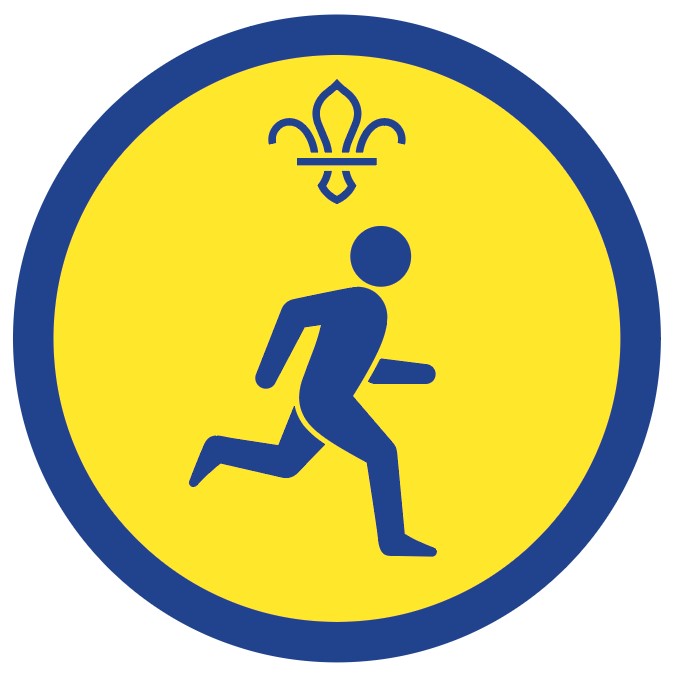
Capture the flag
Before you begin
- Use the safety checklist to help you plan and risk assess your activity. There's also more guidance to help you carry out your risk assessment, including examples. Don’t forget to make sure all young people and adults involved in the activity know how to take part safely.
- Make sure you’ll have enough adult helpers. You may need some parents and carers to help if you’re short on helpers
Setting up the game
- Find an area with plenty of safe hiding spaces, without people leaving the agreed boundaries.
- Set boundaries with your group for during the game, which you could mark out with cones or natural features, such as walls and hedges.
- Remember to check the terrain and make sure the game area is free of hazards. For example, hazards could be roads, dips in the grass, steps, rocks or rivers if you’re playing outside.
- Find a way to identify the teams - one may wear neckers, while the other may not.
- Create a dividing line across the space to split the playing area in half.
- Divide the space you’re using into two sides. You could use cones, chalk or tape, but make sure it’s something that won’t become a trip hazard.
- Use some cones to create a ‘jail’ on each side for players who are tagged. The ‘jail’ can be approximately 2 m by 2 m.
- Use a cone to mark a ‘base’ for each team, which jailed players can return to tag after being freed.
Introducing the game
- Explain the boundaries of the playing area and where the no-go zones are. Tell people how they can use the space respectfully, without disturbing the wildlife or other people enjoying the site if you're in a public space.
- Tell everyone where adults will be around the site and what people should do if anyone in their team needs help. This should include setting memorable spot where an adult will stay at all times.
- Explain the signal to stop play and how long the game will go on for. A long blast on a whistle works well as a signal to stop the game.
- If playing in a public space, young people should be paired up so no young person is left alone and they should run or move together.
- Split everyone into two teams and give each team a ‘flag’. The flag could be any bright object, such as a teddy mascot, necker, frisbee, flag or ball. Each team must hide their ‘flag’ somewhere on their side of the space without the other team seeing where it’s been hidden.
Playing the game
- Players should start on their own side.
- When the game begins, players should try to capture the other team’s flag.
- Some players may choose to help defend their own team’s flag, but no one should be standing directly in front of their team’s flag at any time.
- If a player’s tagged while on the other team’s side of the space, they’re sent to ‘jail’. This should be the ‘jail’ on the side of the opposing team.
- Players can be freed from jail when someone from their own team tags them.
- When freed from the jail, the player who was jailed puts their hands on the head (to signal they’ve just been freed and shouldn’t be tagged) and walks back to their own team’s base and tags it with their foot. Once the base has been tagged, they can then start playing again and trying to capture the other team’s flag.
- Players are safe and can't be captured any time they cross back to their own team's territory.
- A team wins by capturing the other team’s flag first and taking it safely back to their base.
- If one team jails all the other team’s players, they can also be declared the winners and retrieve the other team’s flag.
- If someone captures the flag, you can decide what happens if they get tagged with it. The person could put it down on the ground where it is, or the team whose flag it is can return it to its original hiding place.
- If someone captures the flag, you can decide if it can be passed or thrown between teammates to get it over to their side to win. If it gets dropped on the floor while being passed or thrown, the team whose flag it is could try to retrieve it back too and return it to its original hiding place.
Reflection
This game needed everyone to work as a team. Would it have been possible to win alone? Did people communicate in their teams, or did everyone just do their own thing?
This game was also about solving problems. What was the trickiest part of each role? People might think about having to hide from their opponents, or knowing when to make a break for it. Did people have to think ahead when they were deciding what to do?
How do wide games help people to practise their teamwork and problem-solving skills? How did you communicate with your team? Did you have a strategy or pass a message between players?
If people were designing their own wide games, how could they help people develop their problem-solving and teamwork skills?
What would you change about this game to make it better? How could we make it more creative? What would you do to make this game easier, harder, more challenging or more fun?
Safety
All activities must be safely managed. You must complete a thorough risk assessment and take appropriate steps to reduce risk. Use the safety checklist to help you plan and risk assess your activity. Always get approval for the activity, and have suitable supervision and an InTouch process.
- Contact games and activities
Make sure everyone understands what contact is acceptable, and monitor contact throughout the activity.
- Active games
The game area should be free of hazards. Explain the rules of the game clearly and have a clear way to communicate that the game must stop when needed. Take a look at our guidance on running active games safely.
- Visits away from your meeting place
Complete a thorough risk assessment and include hazards, such as roads, woodland, plants, animals, and bodies of water (for example, rivers, ponds, lakes, and seas). You’ll probably need more adult helpers than usual. Your risk assessment should include how many adults you need. The young people to adult ratios are a minimum requirement. When you do your risk assessment, you might decide that you need more adults than the ratio specifies. Think about extra equipment that you may need to take with you, such as high visibility clothing, a first aid kit, water, and waterproofs. Throughout the activity, watch out for changes in the weather and do regular headcounts.
- Outdoor activities
You must have permission to use the location. Always check the weather forecast, and inform parents and carers of any change in venue.
- To make the game easier, make the playing area smaller and make sure the flag is visible.
- To make the game harder, you could let people hide the flag out of clear sight of the other team.
- To make the game more challenging, several flags could be hidden and the team that retrieve the most, win.
Make it accessible
All Scout activities should be inclusive and accessible.
Young people can work as a team to decide where to hide their flags.


